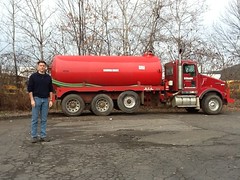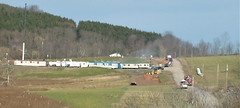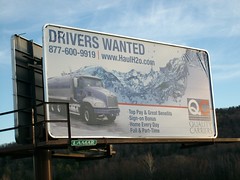Terry Gipson Tours Fracking Sites, 2011
We’ve all been hearing lots of information from different sources about the process of hydro-fracking. And soon, the Legislature and the Governor here in New York will make an important decision whether or not to allow this process to go forward in our state.
In short, proponents of fracking claim that it will mean a boom of economic development in remote areas of the state that need it the most. They also claim that the process can be done safely.
Opponents have been loud and clear stating that the pumping of millions of gallons of toxic chemicals into the ground can and will result in nothing short of the destruction of our water supply.

I have listened to the arguments, reviewed the DEC’s environmental impact report, and received feedback from people all around our district and state. I’d made some initial conclusions about the risk/reward ratio of this issue. BUT…I wanted to see the process and its effects for myself.
It is for that reason that I spent part of the recent Thanksgiving holiday weekend on the road in Pennsylvania. I traveled around the Troy area, getting an on-the-ground look at fracking and the potential economic and quality-of-life impact it has on the local communities. I have to say, my visit was full of surprises.
We used a map of reported fracking accidents supplied by the folks at Earth Justice. A small photo of the map is above. It wasn’t all that long a drive from the Poughkeepsie area.

The first thing I noticed was the trucking traffic. Hundreds of trucks were crowding the small, two-lane country roads. I couldn’t help but think what all the noise and diesel fumes must mean to the people who live there. Trucks hauling equipment. Trucks hauling many hundreds of thousands of gallons of clean, fresh water, much of it shipped in from towns across the border in New York State. And trucks marked “Residual Waste”. I watched as they would enter a drilling site, one after another, to be filled up with toxic waste liquid (we can’t really call it water anymore, can we?) – and then, in a never-ending convoy, make their trek to unknown unloading sites.
Would this waste go into water treatment plants that are incapable of really making this water potable again? Would it go into man-made waste pools and underground storage caves to find its way into our aquifers, streams, and perhaps the Hudson River? I couldn’t get close enough to see where they were dumping this toxic cocktail (whose contents are incredulously protected under a loophole in federal law), but I can tell you, there was a lot of it. One needs to look no further than the reports coming out of Wyoming stating that toxic fracking chemicals have been found in the water supply to know there is a serious danger in this extraction process.
As a visitor to the area, I can assure you that the people who claim the area is in dire need of economic help are absolutely correct. Northern Pennsylvania is economically akin to the lower tier of New York. The Marcellus Shale formation, which is where most of the fracking is taking place, lies beneath some of the least populated and economically undeveloped parts of these two states.

However, for all the talk of economic improvement, there seemed to be very little economic investment in the local communities. There were trailers and make-shift offices/housing, but few signs of permanent economic revival. The town of Troy had no new construction or any outward sign of a boom economy. Now, to be sure, the diners, motels, restaurants and gas stations were doing well. And I’m certain that anyone with construction, welding, mechanical or truck driving skills were in pretty heavy demand. Maybe this is the beginning of a trickle-down economic effect, but the area has a long way to go before they can claim to have a thriving, diverse, and sustainable local economy.
I spoke with a couple of people who live in Troy and surrounding areas, and their opinions reflected the combination of fear and hope that surrounds any large-scale mining operation. They were hoping to have an economic shot in the arm, but fearful as to what this new unknown mining process might do to their land, and to their way of life in the long run. They also recognize the fact that most of the highest-paying jobs are given to outsiders – trained engineers and operators who are shipped in from Texas, Colorado and Wyoming. That explains why the Elmira Corning Airport has become one of the busiest in New York State!
The following photos of some area outdoor signs sum up the battle lines:


I was left with the disturbing feeling that what we don’t know may very well hurt us…badly. I saw lots of above-ground activity… something happening way below the surface… and we can’t be certain that it won’t cause unforeseen (and even foreseen) damage to the region. Damage that may make the area even more economically depressed than it was before this all began once the fracking is finished. The temporary nature of all the building and mining gave me the feeling that the oil and gas companies weren’t there to help build communities. All signs pointed to them being there to get what they wanted and then move on. And this doesn’t even address the myriad health risks and tremendously high chances of the contamination of our most precious resource, clean water.
Envision a time when the trucks are gone, the lease money is spent, the trailers and the diners are empty, and all that is left is unusable farm land with a contaminated water supply. What will these people do then?
My visit to the Troy region confirmed my belief that we should not be gambling with the safety of our drinking water. To do so is narrow minded and risks our national security. Any government that cannot provide its citizens with safe drinking water will ultimately find itself dependent on others to sustain itself. New York should be a leader in creating legislation that will harness clean alternatives energy like solar, wind, geo-thermal, and hydro power. This will create permanent jobs and long-term benefits to our economy and environment.
